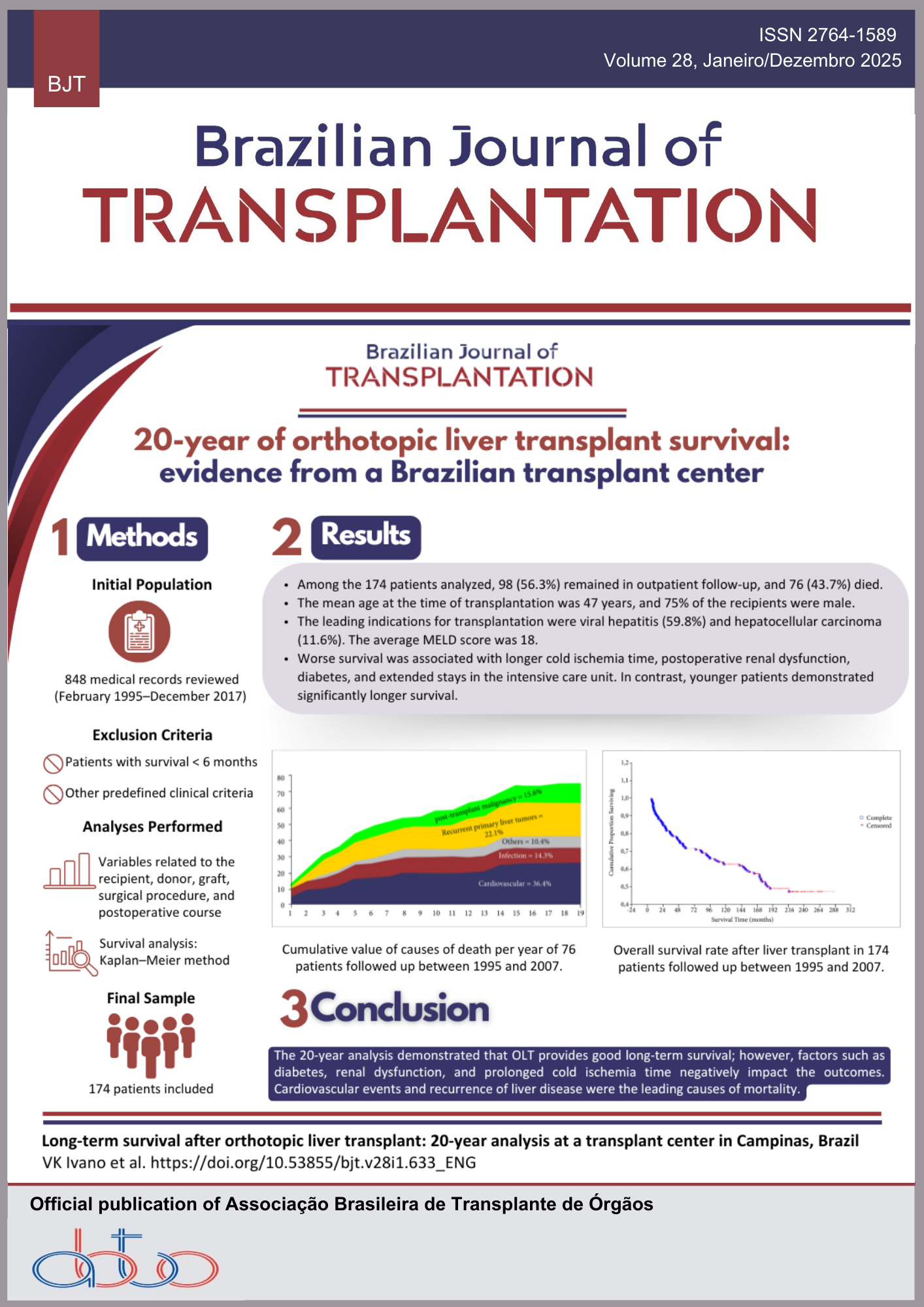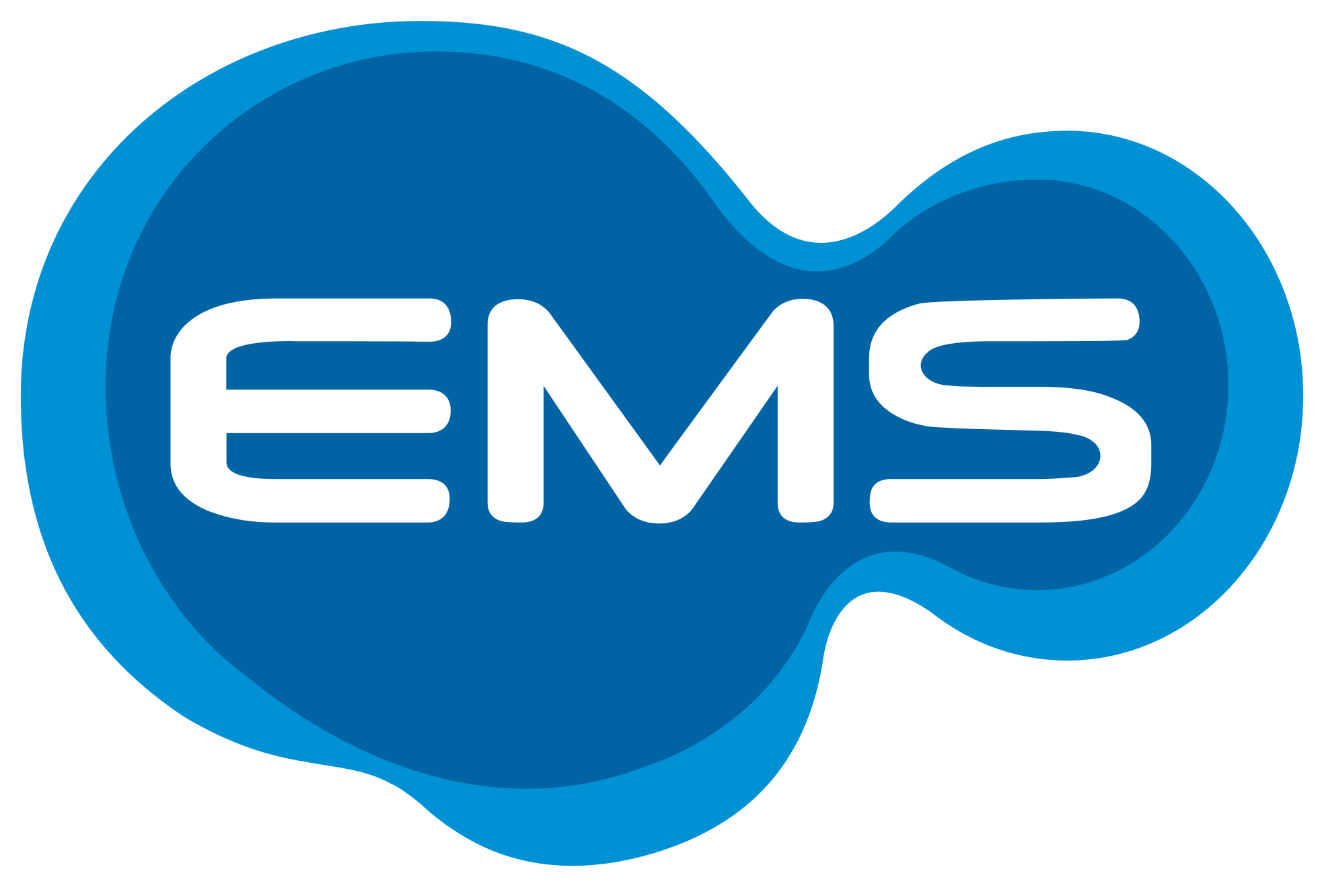Transplante de Fígado na Deficiência de Alfa-1 Antitripsina: Estudo Caso-Controle Retrospectivo em um Centro Brasileiro
Palavras-chave:
Deficiência de Alfa-1 Antitripsina, Transplante de Fígado, Cirrose, Carcinoma Hepatocelular, Estudo RetrospectivoResumo
Objetivos: A deficiência de alfa-1 antitripsina (DAAT) é uma doença metabólica genética rara curável com transplante hepático (TH). O objetivo deste estudo foi avaliar comparativamente pacientes com TH por DAAT e outras causas. Métodos: Estudo observacional, retrospectivo, analítico, caso-controle, avaliando 2.511 pacientes com TH, 19 (0,75%) com DAAT, no período de maio de 2002 a dezembro de 2024. Os dados foram obtidos por meio da revisão dos prontuários e armazenados no programa REDCap. Resultados: A mediana de idade dos pacientes com e sem AATD (NAATD) foi semelhante [56,3 (Δ7-71) e 52,4 (Δ6-78); p = 0,92, respectivamente). O sexo masculino predominou em ambos os grupos. O modelo pré-TH para doença hepática terminal Model for End-Stage Liver Disease (MELD)-Na dos pacientes com DAAT e NDAAT foi de 20 (Δ8-24) e 18 (Δ6-72), respectivamente. Dois pacientes com DAAT apresentaram sorologias positivas compatíveis com infecção prévia por hepatite B. Três pacientes também apresentaram diagnóstico clínico e epidemiológico de doença hepática gordurosa não alcoólica concomitante. O diagnóstico de DAAT foi feito apenas por explante em nove pacientes (n = 47,4%). A dosagem média de DAAT pré-transplante foi de 33,42 mg/dL (Δ19-59,5). Todos os pacientes submetidos à imunofenotipagem apresentaram fenótipo PiZZ. A indicação para TH foi cirrose descompensada (CD); três pacientes (16,4%) apresentaram carcinoma hepatocelular (CHC) concomitante, um diagnosticado apenas no explante. A incidência de CHC foi de 15,9% (DAAT) e 31,3% (NDAAT) (p = 0,34). Nenhum dos pacientes com DAAT apresentou doença pulmonar grave. A sobrevida dos pacientes com DAAT submetidos a TH em 30 dias, 1 e 5 anos foi de 94,7; 88,2 e 64,7%, respectivamente, semelhante às outras causas (91,4, 80,1 e 68,1%; p = 0,47). Conclusão: A DAAT foi uma causa rara de TH devido à CD e CHC, predominantemente em adultos com fenótipo piZZ sem envolvimento pulmonar relevante e cujo diagnóstico é frequentemente feito após TH. A epidemiologia, indicação, prevalência de CHC e sobrevida foram semelhantes a outras causas de TH.
Downloads
Referências
1. American Thoracic Society; European Respiratory Society. American Thoracic Society/European Respiratory Society statement: standards for the diagnosis and management of individuals with alpha-1 antitrypsin deficiency. Am J Respir Crit Care Med, 2003;168:818-900. https://doi.org/10.1164/rccm.168.7.818
2. Bernspang E, Sveger T, Piitulainen E. Respiratory symptoms and lung function in 30-year-old individuals with alpha-1 antitrypsin deficiency. Respir Med, 2007; 101: 1971-6. https://doi.org/10.1016/j.rmed.2007.04.003
3. Camelier AA, Souza LC, Fernandes ALG, Araújo D, Pereira MC, Mogami R. Deficiência de alfa-1 antitripsina: diagnóstico e tratamento. J Bras Pneumol. 2008; 34(7): 514-27. https://doi.org/10.1590/S1806-37132008000700012
4. Clark VC. Liver transplantation in alpha-1 antitrypsin deficiency. Clin Liver Dis, 2017; 21(2): 355-65. https://doi.org/10.1016/j.cld.2016.12.008
5. Stoller JK, Snider GL, Brantly ML, Fallat RJ, Stockley RA, Turino GM, et al. American Thoracic Society; European Respiratory Society. Standards for the diagnosis and management of individuals with alpha-1 antitrypsin deficiency [German]. Pneumologie, 2005; 59(1): 36-8. https://doi.org/10.1055/s-2004-830176
6. Putnam CW, Porter KA, Peters RL, Ashcavai M, Redeker AG, Starzl TE. Liver replacement for alpha1 antitrypsin deficiency. Surgery, 1977; 81(3): 258-61. Disponível em: https://pubmed.ncbi.nlm.nih.gov/320694/
7. Esquivel CO, Vicente E, Van Thiel D, Gordon R, Marsh W, Makowka L, et al. Orthotopic liver transplantation for alpha-1- antitrypsin deficiency: an experience in 29 children and ten adults. Transplant Proc, 1987; 19(5): 3798-802. Disponível em: https://pmc.ncbi.nlm.nih.gov/articles/PMC2903897/
8. Chu AS, Chopra KB, Perlmutter DH. Is severe progressive liver disease caused by alpha-1-antitrypsin deficiency more common in children or adults? Liver Transplantation, 2016; 22: 886-94. https://doi.org/10.1002/lt.24434
9. Kemmer N, Kaiser T, Zacharias V, Neff GW. Alpha-1-antitrypsin deficiency: outcomes after liver transplantation. Transplantation Proceedings, 2008; 40: 1492-4. https://doi.org/10.1016/j.transproceed.2008.02.075
10. Vennarecci G, Gunson BK, Ismail T, Hubscher SG, Kelly DA, McMaster P, et al. Transplantation for end stage liver disease related to alpha 1 antitrypsin. Transplantation. 1996; 61: 1488-95. https://doi.org/10.1097/00007890-199605270-00014
11. Costa MP, Silva RS, Oliveira CL, Lima MS, Almeida AF, Soares MD, et al. Clinical, laboratorial and evolutionary aspects of pediatric patients with liver disease due to alpha-1 antitrypsin deficiency. Arq Gastroenterol, 2023; 60(4): 438-49. https://doi.org/10.1590/S0004-2803.230402023-71
Downloads
Publicado
Como Citar
Edição
Seção
Licença
Copyright (c) 2025 Stella Maria Macêdo, Elodie Bomfim Hyppolito, Karen Suzyanne Coelho Gomes, Larissa Ponte Dias, Larissa Peixoto Teixeira, Ana Leatrice de Oliveira Sampaio, Denissa Ferreira Gomes de Mesquita, Clébia Azevedo de Lima, Bartolomeu Feitosa Neto, Antônio Brazil Viana Júnior, Gustavo Rêgo Coelho, José Huygens Parente Garcia

Este trabalho está licenciado sob uma licença Creative Commons Attribution 4.0 International License.

















